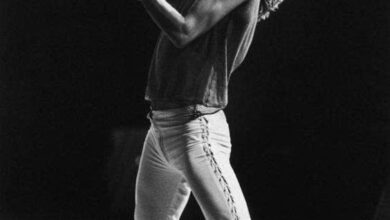Rewatching Oppenheimer: 7 Hidden Easter Eggs You Probably Missed
OPINION: This article may contain commentary which reflects the author's opinion.
After recently rewatching Christopher Nolan’s Oppenheimer, I couldn’t help but notice several subtle details that completely slipped by the first time around. From historical references to Nolan’s trademark filmmaking tricks, the movie is packed with Easter eggs that reveal more about the story than meets the eye. How many of these did you catch?
1. Cameos from Real-Life Physicists
While the film primarily focuses on J. Robert Oppenheimer, the father of the atomic bomb, there are nods to other influential figures in physics. Some of the background characters resemble iconic scientists like Niels Bohr, Richard Feynman, and Enrico Fermi, all of whom played roles in the Manhattan Project. Keep an eye out for Feynman’s distinct bongos in one scene—a nod to his real-life musical hobby!
2. Nolan’s Color-Coding Trick
If you’ve seen Nolan’s films before, you’ll know he loves playing with time and perspective. In Oppenheimer, the use of color becomes a narrative device. Scenes shot in color represent Oppenheimer’s subjective viewpoint, while black-and-white scenes depict an objective, historical perspective. It’s easy to miss this detail on a first watch, but understanding this trick adds a deeper layer to the film’s timeline and themes of perception.
3. The Einstein Connection
Albert Einstein plays a key role in the movie, and if you look closely, you’ll notice more than just his brief exchanges with Oppenheimer. There’s a moment when Oppenheimer walks past Einstein at Princeton—this scene mirrors a famous real-life photograph of the two men taken at the Institute for Advanced Study. It’s a blink-and-you-miss-it tribute to their complicated relationship and shared intellectual legacy.
4. A Nod to Interstellar
Nolan loves to weave in subtle references to his other films, and Oppenheimer is no exception. During one of the film’s tense moments, the sound design feels eerily similar to the ticking clock from Interstellar. The ticking subtly builds suspense, making us feel the mounting pressure Oppenheimer faced as the countdown to the first atomic test approached.
5. The Watch as a Symbol
Throughout the film, Oppenheimer’s wristwatch is prominently featured. While it seems like a simple prop, the watch is a subtle symbol of time and its inevitable march toward the destructive conclusion of his work. The ticking watch acts as a metaphor for Oppenheimer’s growing moral struggle and the weight of responsibility he bears for the creation of the bomb.
6. The Mysterious Chalkboards
Several scenes feature chalkboards filled with complex equations and scientific jargon, which may seem like set dressing. But if you look closely, the equations are accurate representations of the real mathematical work involved in atomic research. This level of detail gives the movie a sense of authenticity and pays homage to the scientists who laid the groundwork for modern physics.
7. Historical Parallels in Background Props
In a subtle but clever move, Nolan places objects and symbols in the background of scenes that allude to the future consequences of Oppenheimer’s work. Look out for the presence of barbed wire fencing in Los Alamos, which eerily resembles the detainment camps used after the war, a reflection of Oppenheimer’s growing anxiety about the consequences of his creation.
So, how many of these hidden gems did you catch during your viewing of Oppenheimer? Nolan’s attention to detail invites repeat watches, ensuring that every time you return to his films, you uncover something new.



